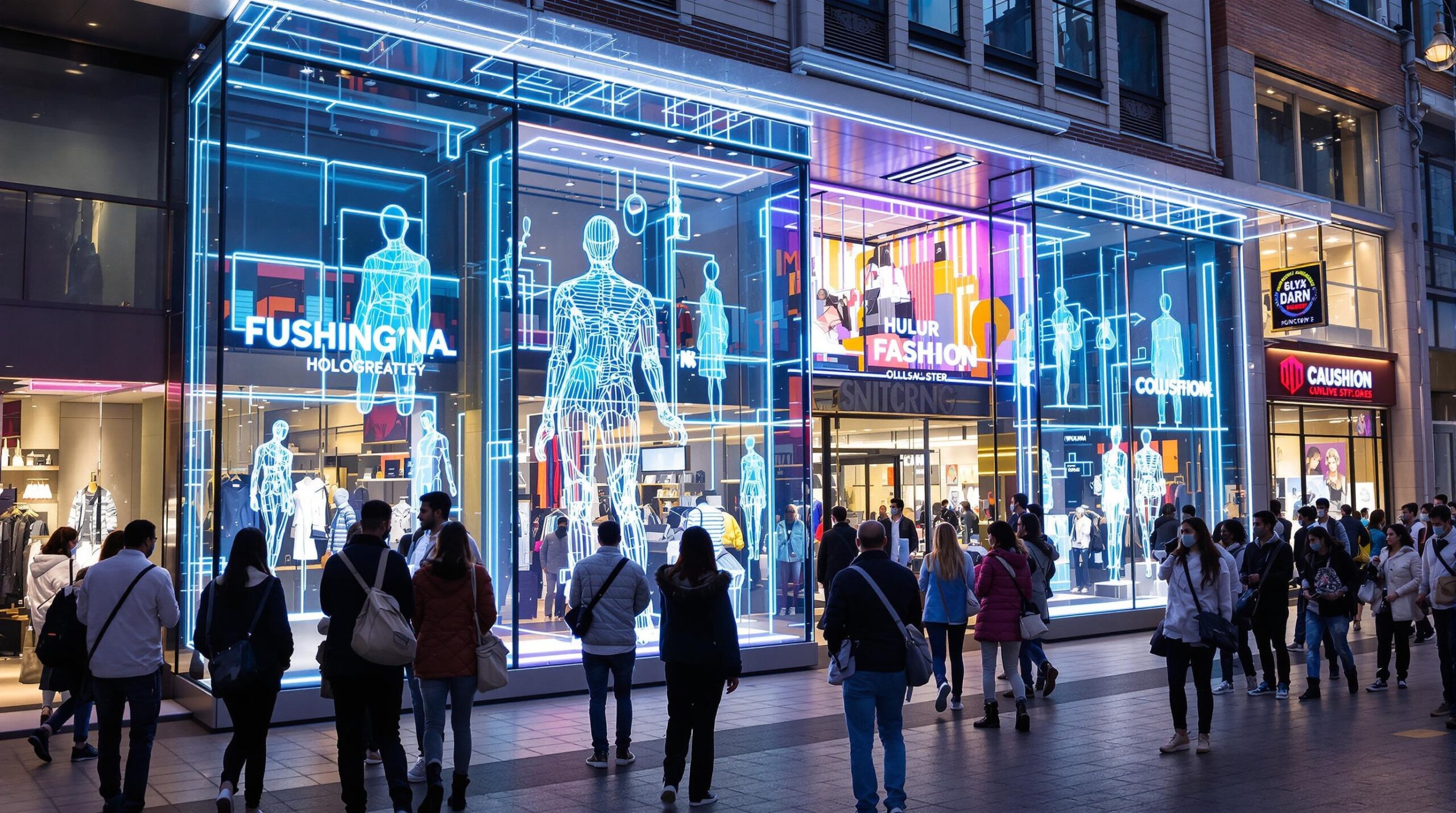Integrating advanced technology in fashion retail transforms how consumers interact with brands. Holographic displays are at the forefront of this revolution. By offering innovative ways to present fashion, they are reshaping the shopping experience on high streets worldwide.
The Emergence of Holographic Displays in Retail
Holographic displays have gradually become more prevalent in retail spaces. These advanced displays use laser technology to project three-dimensional images into open space. This capability allows retailers to showcase fashion items engagingly and dynamically. The mesmerizing nature of holograms draws in passersby, creating an immersive shopping experience.
Traditionally, brick-and-mortar stores relied on mannequins and printed visuals to attract customers. Holographic displays, however, present fashion in vivid and animated forms. This change captures the attention of tech-savvy consumers and opens new opportunities for creative retail experiences. By adopting these displays, stores are modernizing their appearance and enhancing customer engagement.
Enhancing Customer Experience with Technology
Holographic displays enhance the shopping experience by providing an interactive and visually appealing interface. These displays can project real-time holograms of fashion pieces, allowing customers to view products from all angles. Unlike static displays, holograms enable customers to see items in motion, demonstrating how they look when worn.
These cutting-edge displays can incorporate interactive elements like touch controls or gesture recognition. Customers can alter displayed items’ color, size, or design with simple hand movements. This interactive feature creates a personalized shopping experience that traditional displays cannot offer. As the technology evolves, more features may emerge, further enhancing consumer interaction.
Transforming Window Shopping
The appeal of holographic displays extends beyond the store interior to the shopfront. Holograms are making window displays more captivating and informative. By using holographic projections, stores can showcase entire collections without physically stocking each item in the window.
With holographic window displays, retailers can convey more detailed narratives about their collections. These stories can shift with the seasons or align with specific marketing campaigns. Customers walking by can witness dynamic fashion shows right outside the store, enticing them to enter and explore further. The allure of a lively, ever-changing display creates anticipation and curiosity among shoppers.
A Sustainable Approach to Fashion Retail
Holographic displays support sustainable retail practices by reducing the need for physical materials. Traditional store setups require numerous resources to create mannequins and printed marketing materials. Holograms, however, eliminate this need by enabling virtual presentations of fashion items.
By minimizing their reliance on physical displays, retailers reduce waste and their carbon footprint. Furthermore, holographic installations require less physical space, allowing for more efficient store designs. This compact and flexible approach makes it easier for retailers to update their offerings without generating excessive waste.
Expanding Possibilities with Augmented Reality
Combining holography and augmented reality (AR) can offer a richer, more immersive shopping experience. AR enhances holographic displays by adding another layer of digital content accessible through smartphones or AR glasses. This integration allows customers to interact with products in a more detailed manner.
For instance, shoppers with AR devices can view additional product information, customer reviews, or styling tips overlaid on holographic items. This convergence of technologies provides a seamless blend of online and offline shopping experiences. As this synergy develops, retailers can further personalize the shopping journey and create unique, memorable experiences for each customer.
Challenges in Integrating Holographic Technology
Despite the benefits, integrating holographic displays in retail presents challenges. The initial installation cost can be high, deterring smaller businesses from adopting the technology. Furthermore, maintaining the delicate equipment required for producing holograms involves specialized knowledge and ongoing expenses.
Retailers must also consider the technological learning curve for both staff and consumers. Training employees to operate and troubleshoot holographic systems is crucial for smooth implementation. Similarly, customers unfamiliar with the technology may initially find it daunting. Clear instructions and intuitive design are essential for overcoming these hurdles and ensuring a positive user experience.
The Road Ahead for Holographic Fashion Displays
As technology advances, the future of high-street shopping could be dominated by digital and holographic innovations. The allure of holographic displays shows no sign of waning, with continuous developments promising even greater enhancements. Artificial intelligence and deep learning may pave the way for more sophisticated and responsive holographic interfaces.
Retailers seeking to stay relevant in a competitive market must adapt to the evolving technological landscape. Holographic displays provide a unique avenue to engage customers, offer personalized experiences, and maintain a modern brand image. The integration of these technologies is set to revolutionize the retail sector, redefining what consumers expect from their shopping experience.
Conclusion
The impact of holographic fashion displays on high-street shopping is profound. As retailers embrace this innovative technology, the shopping experience becomes more engaging, interactive, and sustainable. Despite challenges in adoption, the potential benefits outweigh the risks, promising a vibrant future for fashion retail.
Holographic displays capture customers’ imaginations and provide a glimpse into the possibilities of modern retail. As technology continues to evolve, so will the role of holograms in shaping unique and memorable shopping experiences. High street retailers are on the cusp of a transformative era, one in which holographic displays play a pivotal role in defining the consumer journey.

